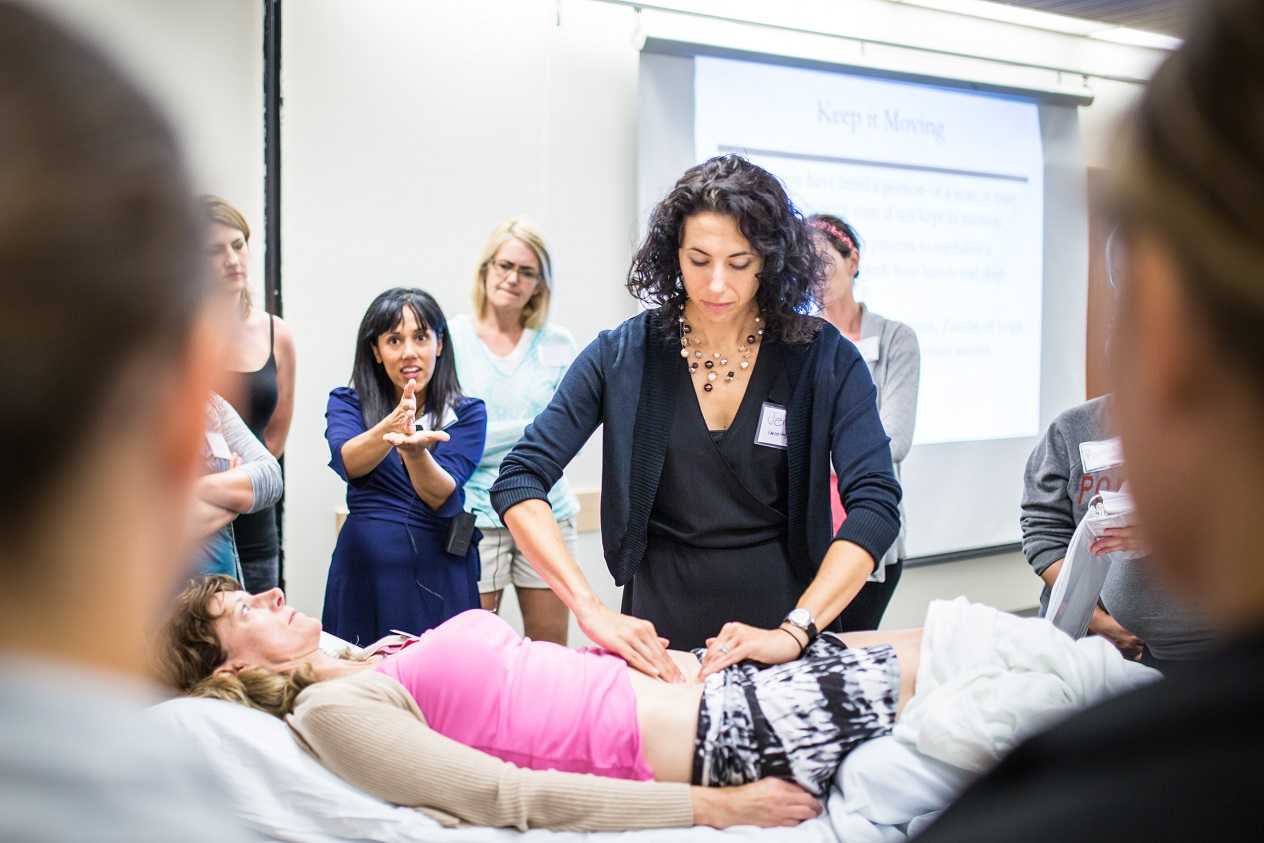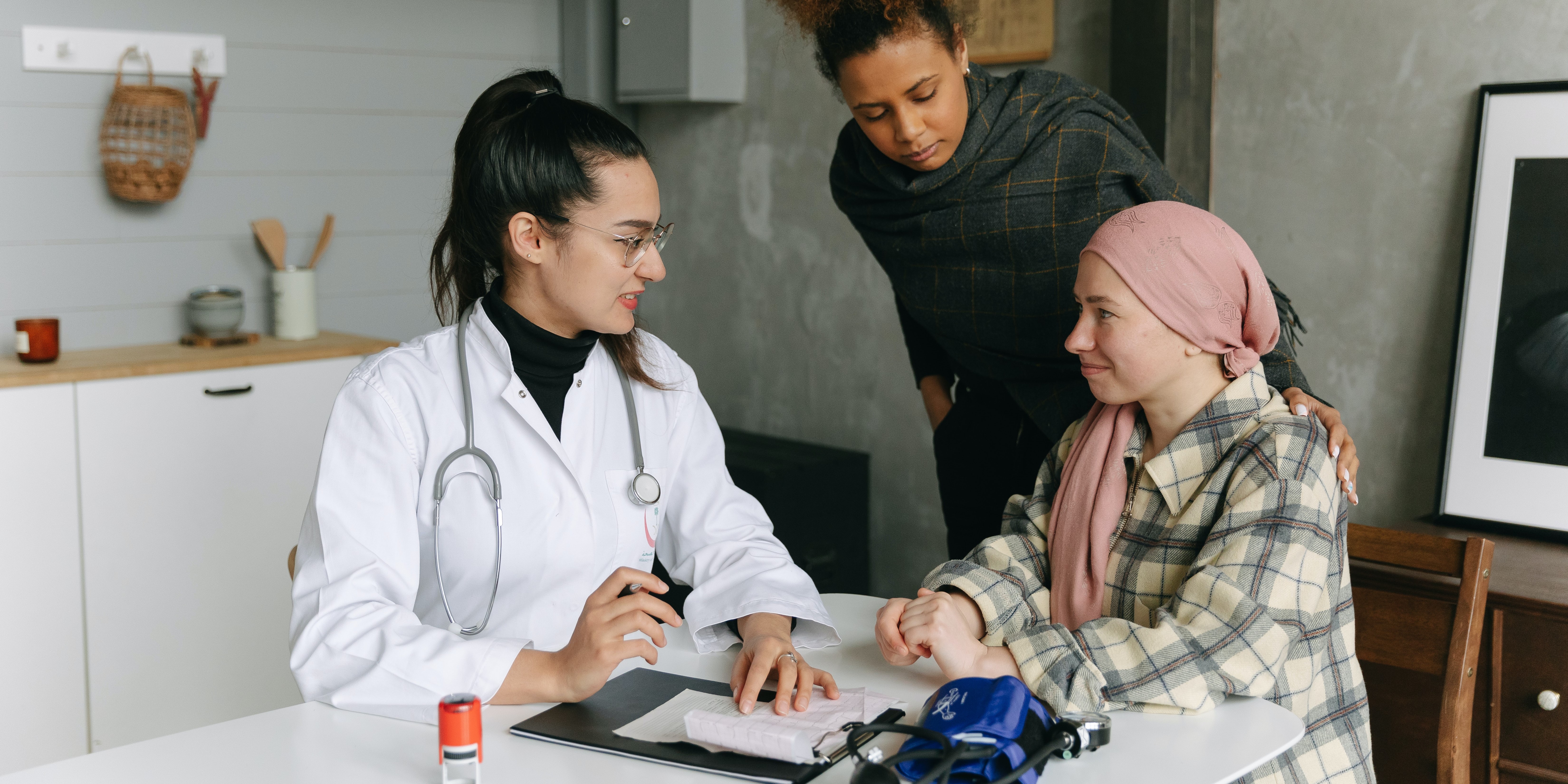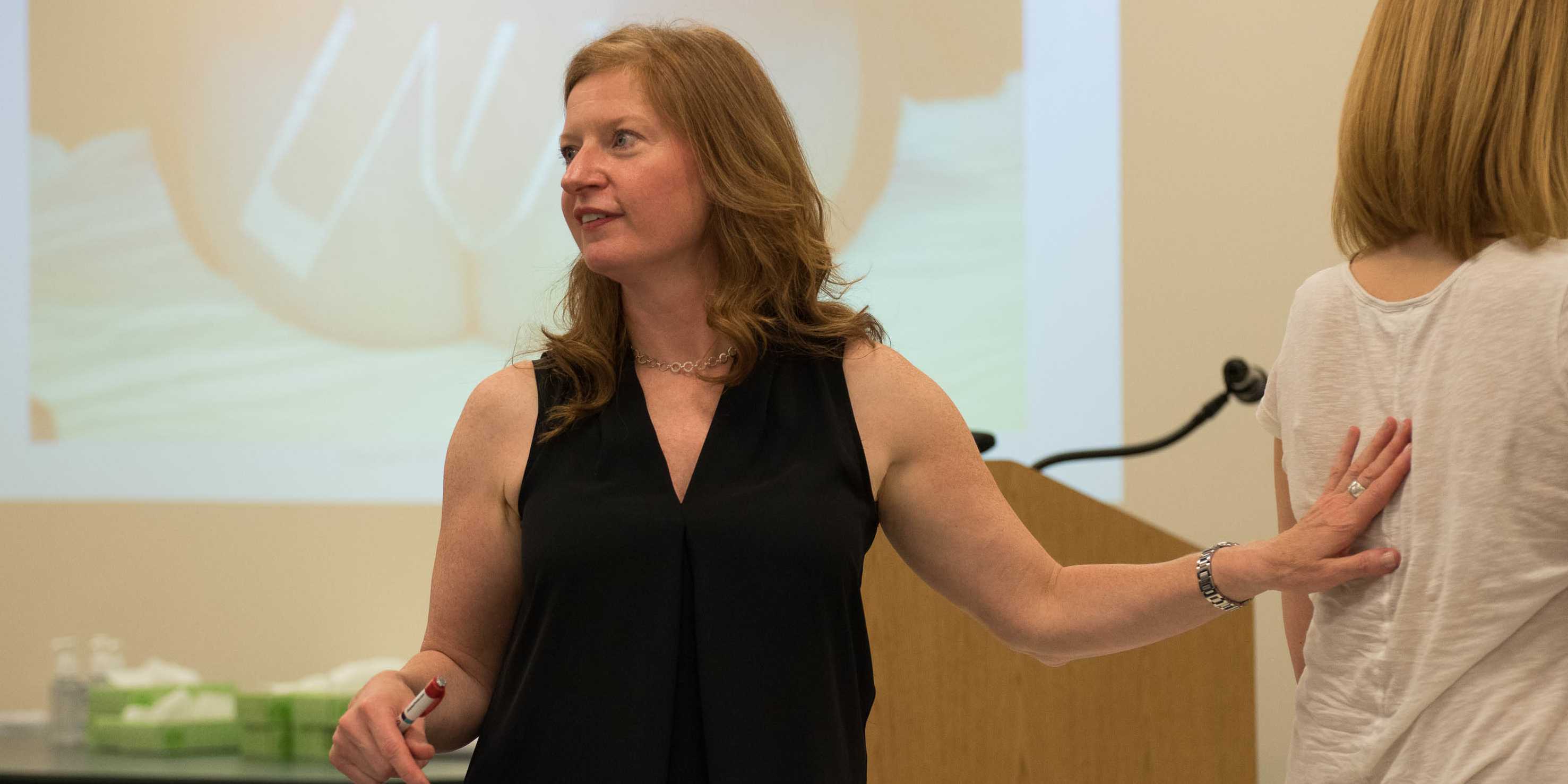While many prenatal women practice yoga to stay healthy and fit during pregnancy, prenatal yoga is becoming a more and more popular tool to prepare women for labor. The topic of prenatal pregnancy was recently covered in the Welland Tribune. The article, titled “Prenatal Yoga Gets Women Ready for Birth,” follows Angela Sacco, a registered nurse and pre- and post-natal fitness specialist. Sacco has attended more than 100 births. Her eight-week program is specially-tailored to aid pregnant women as they prepare for giving birth.
According to Sacco, “Yoga in the delivery room, be it home or hospital, is meant to relieve pain, build confidence and make it all go quicker.”
This November, Herman & Wallace is proud to bring our Differential Diagnostics of Chronic Pelvic Pain and Dysfunction to Orlando, FL! This three-day course is taught by Peter Philip, PT, ScD, COMT.
Although exercise is critical for pregnant women (just as it is for everyone), few receive the appropriate amount of exercise. This may seem intuitive, but physical symptoms of pregnancy often are a barrier to physical activity for women.
A recent Research Report article published in The Journal of Women's Health - Physical Therapy, titled “The Impact of Symptom Type and Frequency on Activity Level During Pregnancy,” studying the daily records of physical activity for “sedentary women with a history of preeclampsia,” discusses how maternal weight and gestational age affect activity levels. For example, women who are already over-weight have lower activity levels during pregnancy. Similarly, the further along the baby is, the less likely the mother is to be physically active. Women, after week 28, have the greatest reduction in physical activity.
This is problematic because a healthy mom is crucial for both the health of the mother and the health of the baby. Furthermore, symptoms like fatigue and backache decrease among more active moms. Gestational diabetes and cardiovascular disease are less likely among active moms as well. Over-exercise can be detrimental as well; however, the numbers of women over-exercising during pregnancy is negligible compared to the majority, who are under-active during pregnancy. Often, these physiological problems persist after pregnancy.
Despite the fact that millions of men and women experience pelvic floor dysfunction, it is often and incorrectly considered a “women’s health issue” and pelvic rehabilitation is often thought to be the province of Women’s Health physical therapists. Information about pelvic rehabilitation is often couched in language that revolves around perinatal and elderly female patients, while ignoring men, athletes, and teens.
For example, both male and female athletes can be frequent sufferers of pelvic floor dysfunction, as a by-product of the extreme stress high level performance takes on their bodies, often linked to sports hernia and femoroacetabular impingement.
This year, Herman & Wallace is introducing a new course which applies a sports medicine approach to treating the pelvic floor and core. Biomechanics of the Hip and Pelvis illustrates how understanding pelvic balance and manual movement therapy are integral to treating and preventing injury. This course is instructed by Steve Dischiavi, MPT, DPT, ATC, COMT, CSCS, who is the PT for the Florida Panthers hockey team and is applicable to treating all patients: from men to new moms, athletes to the elderly.
Pudendal Neuralgia (PN) is a neuropathic condition that causes patients to suffer chronic pain or numbness. Furthermore, PN is often accompanied by fecal incontinence, urinary incontinence, and numbness of the genitalia. Patients experiencing PN struggle with one of the most difficult nerve conditions and one that affects men and women alike.
Physical therapy has shown itself to be one of the few methods to successfully treat PN. However, few physical therapists have the knowledge, experience, and skills required. Recently, Greg Vigna, M.D., J.D. wrote an article for New York Injury News about pudendal neuralgia. In it, he describes the obstacles facing patients with PN:
"Historically the management of pudendal neuralgia was only available at a select few centers throughout the country. The reasons for this is that pudendal neuralgia was quite rare, often overlooked, and under diagnosed by the medical community. There are only a few doctors in this country who have received the advanced training in the management of this disorder. Even fewer have the advanced surgical training. A great number of physicians do not have a base understanding of the pudendal nerve and are unaware of pudendal neuralgia."
We are excited to announce Herman & Wallace instructor Ginger Garner, PT, MPT, ATC, PYT will speak at the National Athletic Trainers’ Association’s (NATA) 64th Annual Meeting and Clinical Symposia this June. Her advanced presentation, titled Yoga Pulls Double Duty: Establishing Controlled Flexibility in Athletes, has already sold out!
According to Ginger, yoga has been used as a theoretical healing system for more than five-thousand years. In 2001, she founded Professional Yoga Therapy Studies, an organization that blends yoga, sports medicine, and physical therapy curricula to educate clinicians and patients alike. Her medical yoga undergraduate, graduate, post-graduate, and medical continuing education programs are the first of their kind in the US. While her clinical focus ranges from orthopaedics to public health education, Ginger considers maternal health her most important work.
With PF1 Durham just around the corner, and PF1 Seattle in January sold-out with a 20-person wait list, our next PF1 is filling up quickly.
PF1 in Maywood, IL from March 1-3 is over half-full, and additional registrations are rolling in each day. If you are interested in joining us for PF1 in Maywood, do not hesitate to register. We expect this course to fill up before the holidays are upon us, so act quickly.
Once PF1 in Maywood is full, the next available PF1 is in Houston, TX in early May 2013. If you'd like to take this popular course before May of 2013, we suggest registering for the Maywood course today!
A big thanks to everyone who completed our PTPC Job Task Analysis Survey over the past few weeks. We received over 400 responses, which is more than enough data that we will need to perform the necessary analysis.
On May 2nd, we drew the names of our two lucky participants, who will each received a free course registration of their choosing. Congratulations to Christy Kline, PT and Kate Middleton, PT on winning the drawing!
Over the next few weeks, our subject matter experts and test development partner, Kryterion, will work together to finalize the quantitative blue print. This blue print will determine the relative amount of exam items that will be devoted to various sub-topics within pelvic rehabilitation. While not a "study guide", those interested inpursuing PTPC could use this test blue print to determine the topicson which to focus their studying efforts.
In a study from the Center for Aging at the University of Alabama, Birmingham and the Birmingham/Atlanta Veterans Affairs Geriatric Research, Education, and Clinical Center, researchers determine that physical therapy, bladder control strategies, and biofeedback significantly reduced the incidence of urinary incontinence in post-radical prostatectomy males when compared to a control group.
Check out the abstract of the study here.
The Institute is sponsoring a radio show hosted by Dr. Melanie Barton and featuing Amy Stein, MPT, BCB-PMD. Amy will talk about Interstitial Cystitis and Pelvic Pain and the role of physical therapy in treating these problems
Tune in on April 28th or visit Dr. Melanie's site to download the podcast.









































